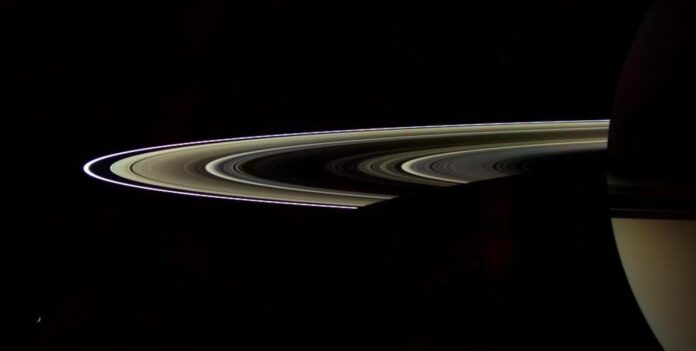The Saturnian rings are the brightest of the four ring systems of the solar system owing to their nearly new water-ice composition. They are highly susceptible to bombardment by micrometeoroids exogenic to the Saturnian system.
However, there is ongoing debate as to whether Saturn’s main rings are relatively young or ancient— having been formed shortly after Saturn or during the Late Heavy Bombardment. A new study- by CU Boulder‘s scientists- has offered the answer to this question that has boggled scientists for well over a century.
Scientists suggest that Saturn’s rings are remarkably young- no more than 400 million years old. That makes the rings much younger than Saturn, about 4.5 billion years old.
The scientists studied dust, which might seem like an odd subject, to reach that conclusion.
Tiny rocky particles flow continuously across the solar system. On some planetary bodies, notably the ice that makes up Saturn’s rings, this flux may occasionally leave behind a thin layer of dust.
By examining how quickly this layer of dust accumulates, scientists set out to date Saturn’s rings in the new study. It’s similar to estimating the age of a house by running your finger along its surfaces.
Physicist Sascha Kempf at CU Boulder said, “Think about the rings like the carpet in your house. If you have a clean carpet laid out, you just have to wait. Dust will settle on your carpet. The same is true for the rings.”
The researchers laboriously examined dust specks floating around Saturn from 2004 to 2017 using a device on NASA’s defunct Cassini mission called the Cosmic Dust Analyzer. Only 163 of the 13 years’ worth of collection’s grains came from outside the planet’s immediate neighborhood. But that was sufficient. Their estimates indicate that Saturn’s rings have only been collecting dust for a few hundred million years.
In other words, the planet’s rings are a brand-new phenomenon that appeared (and possibly even vanished) in a cosmic “blink of an eye.”
Kempf said, “We know approximately how old the rings are, but it doesn’t solve any of our other problems. We still don’t know how these rings formed in the first place.”
Cassini offered an opportunity to put a definitive age on Saturn’s rings. The spacecraft first arrived at Saturn in 2004 and collected data until it purposefully crashed into the planet’s atmosphere in 2017. The Cosmic Dust Analyzer, shaped like a bucket, scooped up small particles as they whizzed by.
Kempf said, “That these ephemeral features existed at a time when Galileo and the Cassini spacecraft could observe them seems almost too good to be true, and it begs an explanation for how the rings appeared in the first place. Some scientists, for example, have posited that Saturn’s rings may have formed when the planet’s gravity tore apart one of its moons.”
“If the rings are short-lived and dynamic, why are we seeing them now? It’s too much luck.”
Journal Reference:
- Sascha Kempf, Nicolas Altobelli et al. Micrometeoroid infall onto Saturn’s rings constrains their age to no more than a few hundred million years. Science Advances. DOI: 10.1126/sciadv.adf8537
